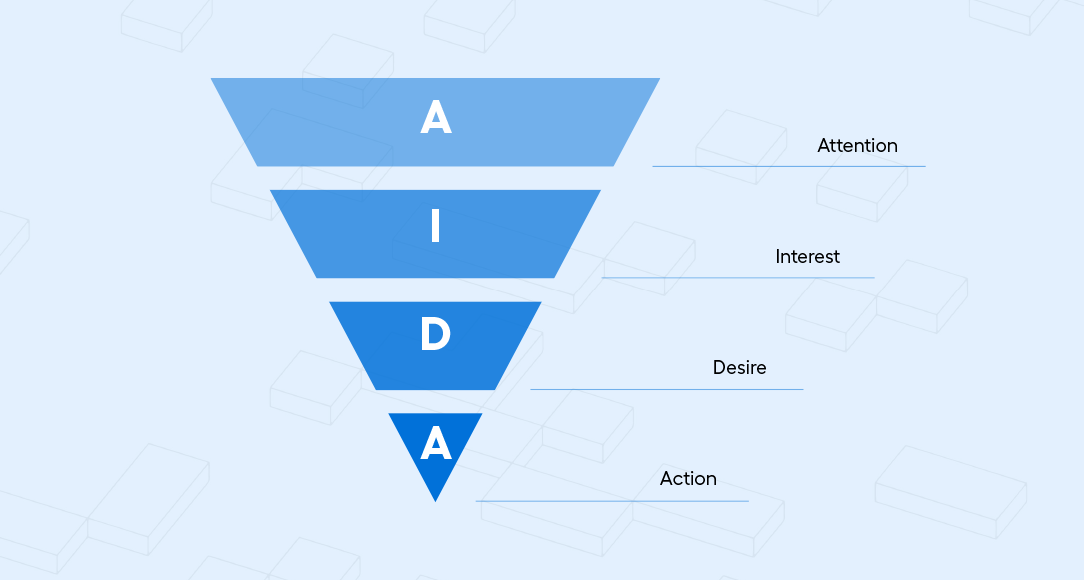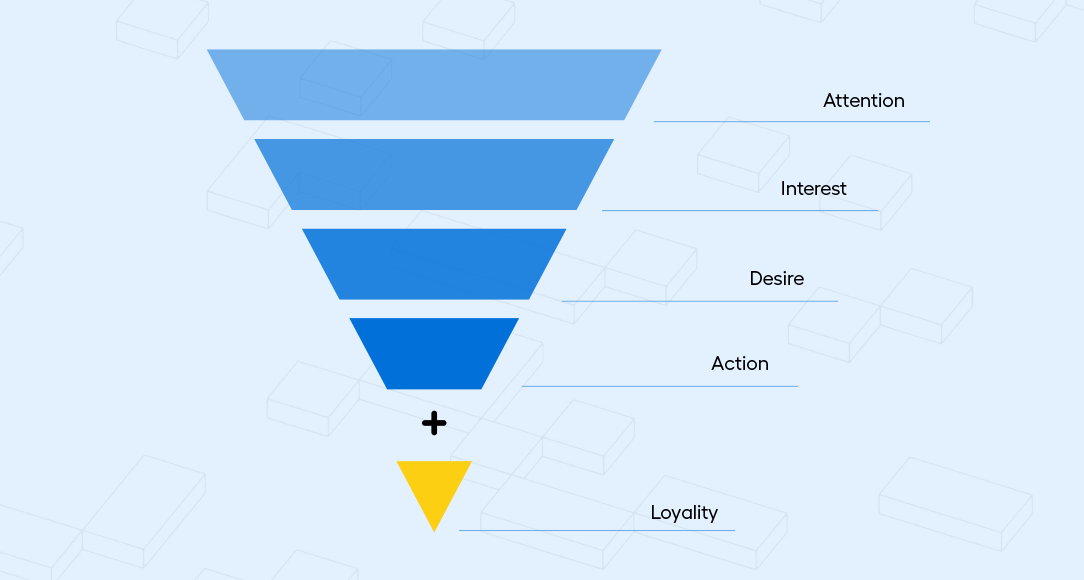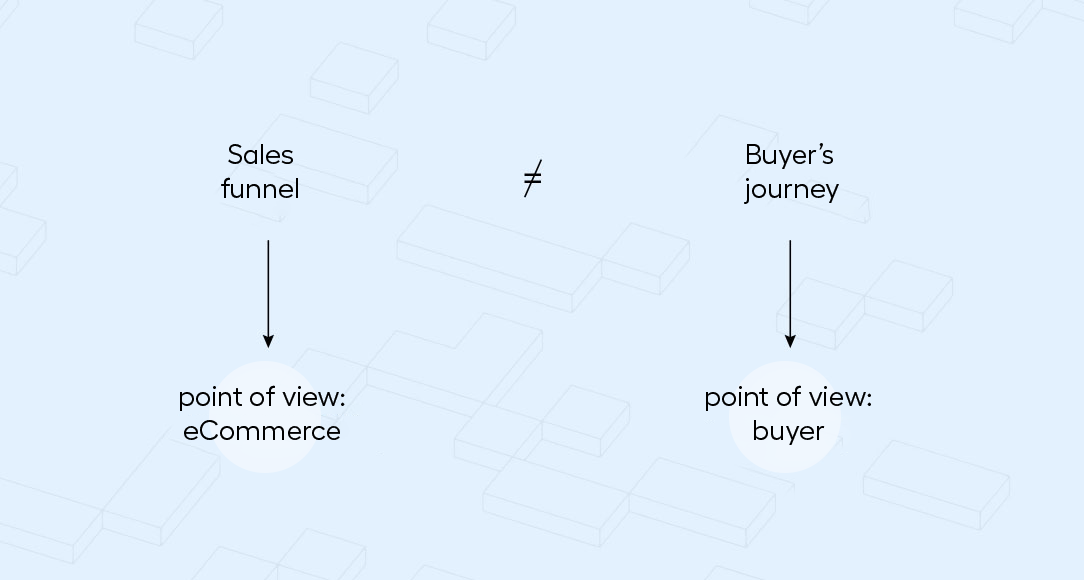Sales funnel in an online store - what is it and how to build it in eCommerce?
Table of contents:
- Sales funnel - what is it?
- How to build a sales funnel in an online store?
- Building a sales funnel from scratch - 4 practical tips
- Build brand awareness
- Find a way to get the customer excited about the product
- Convince the customer to make a transaction
- Remember post-sales activities
- Sales funnel method in an online store - what else to keep in mind?
- Sales Funnel - a must-have in your eCommerce
- attention - capturing the potential customer's attention,
- interest - generating interest in the offer and brand,
- desire - creating a desire to own the offered product or use the service,
- action - persuading the customer to take a specific action, i.e., make a purchase.
- ToFu (Top of the Funnel) - the top part of the funnel. At this stage, there are customers who have had some contact with the brand but are just becoming familiar with it, gaining awareness.
- MoFu (Middle of the Funnel) - the middle part of the funnel. Here are people looking for a solution to a specific problem but don't know how to solve it. Despite not having a specific decision about the best product or service, individuals in this phase are fully aware of their needs and are advanced in the selection process.
- BoFu (Bottom of The Funnel) - the bottom part of the funnel. The last stage, where customers are just a step away from making a purchasing decision. This is usually the largest group of customers ready to make a purchasing decision after final confirmation.
- conducting engagement-oriented social media campaigns,
- creating content (e.g., blog articles) that present the brand's values,
- implementing SEO strategy to improve the store's search engine ranking and increase the chances of being noticed by new customers,
- participating in industry events, networking at conferences, or cold calling (especially in the B2B industry).
- creating educational content (videos, webinars, infographics) about the offered products or services,
- maintaining relationships with customers through newsletters,
- collaborating with influencers,
- expanding market recognition and visibility.
- offering benefits and added value - emphasise unique features of the product that distinguish it from the competition and suggest additional values that users will gain. For example, some may be attracted by a discount, while others may be encouraged by a well-crafted call to action.
- utilising social proof - highlighting reviews and opinions of other customers about products or creating case studies related to the offered service can help build trust and convince new buyers to make a transaction.
- providing real-time support - the ability to contact customer service or even provide a chatbot can help resolve any last-minute doubts before making a transaction.
- Ensure a good user experience (UX) - make sure the customer service process is efficient, and the website or application is intuitive and easy to use.
- Create a loyalty program - an excellent tool for maintaining long-term relationships. Offer rewards, points for purchases, or exclusive deals for loyal customers.
- Follow customer feedback - regularly gather customer opinions and consider them when improving your offer. Actions based on customer feedback, both positive and negative, help adapt to their expectations, influencing loyalty.
How to capture the interest of a potential customer in your online store? How to guide them through the entire buying process until they place an order? A well-designed sales funnel can help determine the most effective path. It is a strategic tool that visually reflects the real sales process. Proper customization for the industry's specifics, along with continuous monitoring and optimization of individual stages, allows for maximizing sales results. Learn how to construct your own sales funnel and increase profits in your online store. Practical tips can be found in this article!
Sales funnel - what is it?
The sales funnel (also known as the conversion funnel) is a concept derived from the sales and marketing industry. Its basic premise is based on the AIDA model developed in the 20th century. This model illustrates the stages a customer must go through from encountering an advertising message to taking action and making a purchase. Expanding the AIDA acronym, these steps include:

Visualizing the sales process in this way helps precisely tailor the marketing strategy to the specific needs of the audience, resulting not only in effective conversion (action), but also in building customer loyalty. However, it's essential to note that over the years, the traditional AIDA model has evolved. With the emergence of new sales channels (both online and offline) and a change in companies' approach to customers (where building long-term relationships became just as important as making a one-time purchase), creating a sales funnel requires more flexibility and expansion of individual stages.
How to build a sales funnel in an online store?
There is no one universal method for constructing a sales funnel – its formation depends on the individual characteristics of your business, the industry's specifics, and the target audience you are addressing. However, there are fundamental principles to consider when creating your own funnel. One of the key principles is dividing the conversion funnel into three main parts:
Building a sales funnel from scratch - 4 practical tips
What does building a sales funnel look like in practice? To facilitate the implementation of this method in your online store, we have prepared tips that will help you reach your target audience more easily.
Build brand awareness
If you start building a sales funnel by creating specific sales offers, you are making a basic mistake. At the beginning, focus primarily on building awareness of the brand's existence and other activities that will interest potential customers. You can achieve this by:
Find a way to get the customer excited about the product
Have you succeeded in getting your audience to associate with your brand? Then the next step in building your funnel is to generate interest in the product or service itself. To do this, it's important to present your offering in a way that focuses on the specific value you can deliver to your customers (or solve their problems) and to tailor your communications to their individual needs. If necessary, it may be important to respond to any concerns they may have (e.g., through the FAQ section of your website or responding adequately to user messages on social media). In addition, it is also worth focusing on activities at this stage, such as:
The combination of these actions allows for effectively guiding potential customers through this stage, increasing the chances of transitioning to the next stage of the sales funnel.
Convince the customer to make a transaction
The user is aware of your product and is interested, but this doesn't guarantee they will make a purchase. Therefore, take advantage of this moment to convince potential buyers to finalise the transaction. This can be achieved by:
Additionally, the transaction finalisation stage (also known as generating sales leads) allows you to gather additional customer information that can be used in the future for better personalization of offers and maintaining contact with the buyer. In this case, at this stage, it's also worthwhile to invite users to subscribe to the newsletter or follow the company's profiles on social media.
Remember post-sales activities
It might seem that the sales funnel ends with making a purchase. In traditional terms, this is true. However, in times of growing competition, it's worth expanding it to another stage: building customer loyalty. In this approach, post-sales activities are crucial—everything that ensures the customer regularly visits your platform. What actions should be taken for this purpose?

Sales funnel method in an online store - what else to keep in mind?
Although the sales funnel allows for a clear division of the plan into stages, you must be aware that certain actions should be continuous and aimed at customers at every stage of the sales funnel. An excellent example of such an area is content marketing, creating valuable content. Properly created content can interest both individuals in the top part of the funnel and those at the bottom.

When creating the funnel, it's also essential to remember to adopt the perspective of the online store. While the sales funnel reflects the buyer's steps, it includes actions and aspirations of company employees who ensure the building of a potential customer base. This approach distinguishes this method from the broader concept of the buyer's journey, which concerns the general purchasing need and considers only the buyer's perspective.
Sales Funnel - a must-have in your eCommerce
Visualising the sales funnel should be one of the essential tools to make your online sales more effective. Monitoring each stage allows for ongoing improvements, enabling a larger number of people to move to the final stages of the funnel, not only completing purchases but also regularly returning to the e-store in the future. Although there is no one effective way to build a funnel, this article equips you with practical tips to create a personalised version of this method. Don't wait; take action now to maximise your sales!



